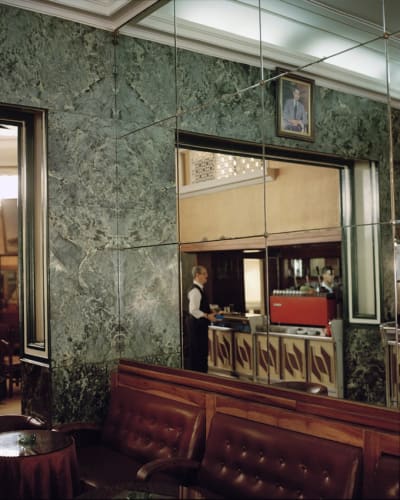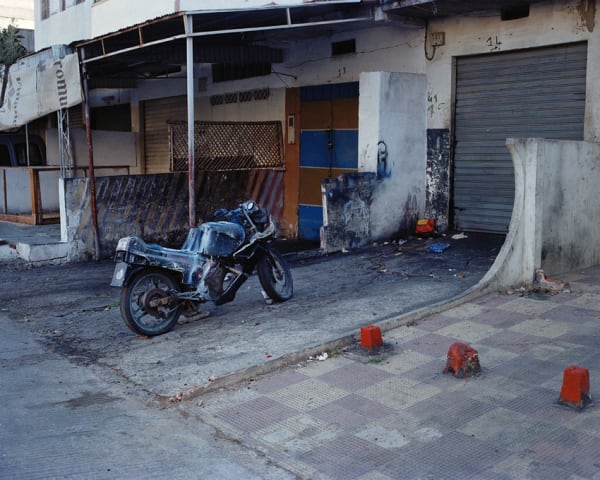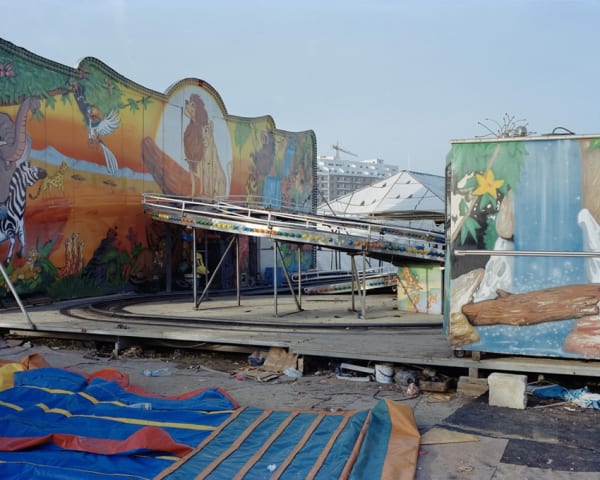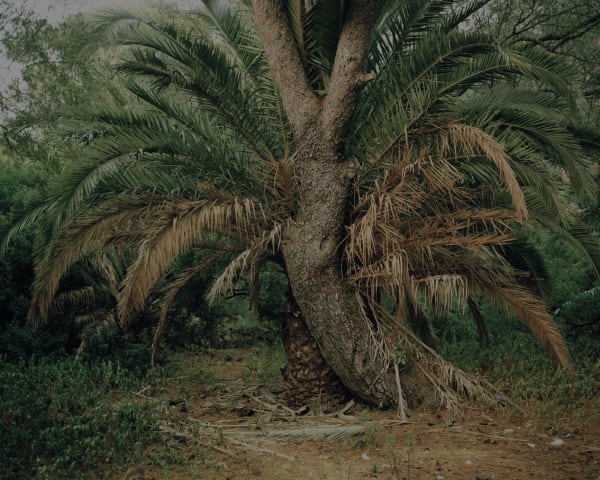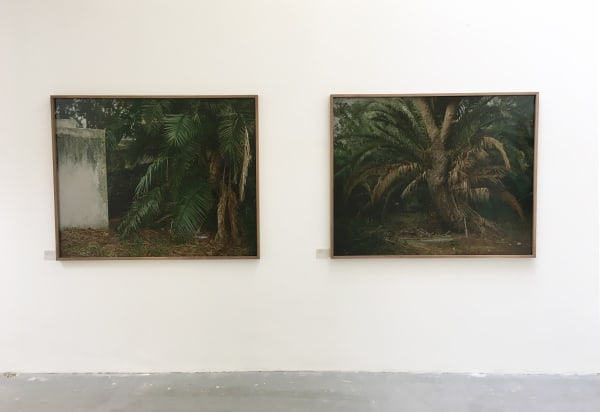The Interzone
Past exhibition
Overview
The Interzone, Tanger 2013-2017
In partenrship with Deuxième édition de la Biennale des photographes du monde arabe contemporain (organized by Institut du Monde Arabe and Maison européenne de la photographie)
“Ever since I took up photography I have been interested in the notion of frontiers. It was therefore inevitable that one day I would arrive in Tangier, a quintessential frontier city. First, geographically: as a crossroads between the north and south, east and west, Europe and Africa, the Mediterranean and the Atlantic. But above all metaphorically and symbolically: as a frontier between the real and the fictional. Tangier, the city of myth, theatre and cinema, not to mention also the city of swindles and counterfeits. It is my impression that, for both those who are only just discovering the city and those who live there on a more or less permanent basis, the dimension of desire—fantasy—goes hand-in-hand with a degree of disillusionment. As for any idealized object, the experience always turns out to be irrevocably disappointing.
When talking about Tangier, some words crop up regularly: fiction, myth, theatre, cinema, mise en scène, among others. And the names of writers, artists, actors and socialites, as though they were the tutelary divinities of the place (decadent for the most part, like the city itself): Paul Bowles, Claudio Bravo, the Rolling Stones, William Burroughs, Mohamed Choukri, Barbara Hutton, et al.
In Tanger fait son cinéma (2012, Khbar Bladna, p. 9), Patricia Tomé writes:
And then there were those who decided to stay there, pitched facing the four points of the compass, neither exiles nor émigrés, just travellers without a ticket home, wandering entertainers, nomadic artists who, in wanting to attest the exoticism of the place and their way of life, had constructed the city in the image of a legend, their personal myth, and made their existence a permanent performance in a cinema set. Tangier had become the screen of their reality …. They moved around in a scenario that blended reality and fiction. The ville du d’étroit offered them an exceptional stage, a magnificent outdoor theatre.
And then there were those who decided to stay there, pitched facing the four points of the compass, neither exiles nor émigrés, just travellers without a ticket home, wandering entertainers, nomadic artists who, in wanting to attest the exoticism of the place and their way of life, had constructed the city in the image of a legend, their personal myth, and made their existence a permanent performance in a cinema set. Tangier had become the screen of their reality …. They moved around in a scenario that blended reality and fiction. The ville du d’étroit offered them an exceptional stage, a magnificent outdoor theatre.
It is this “scenario that blended reality and fiction”, this “cinema set” that I tried to capture on film in this five-year-long project.
As with my earlier works on Asmara and Casablanca, my photographic approach to Tangier’s urban landscape departed from simple documentation to focus on the formulation of an imaginary and almost dreamlike portrait of the city. The city that I photographed—that I wanted to conjure up in my images—does not exist. Or, it would be better to say, it exists at the junction of the actual city, the one I actually explored, and the image of Tangier that I carry within me, the one nourished by myth and works of literature and cinema.
As with my earlier works on Asmara and Casablanca, my photographic approach to Tangier’s urban landscape departed from simple documentation to focus on the formulation of an imaginary and almost dreamlike portrait of the city. The city that I photographed—that I wanted to conjure up in my images—does not exist. Or, it would be better to say, it exists at the junction of the actual city, the one I actually explored, and the image of Tangier that I carry within me, the one nourished by myth and works of literature and cinema.
In Interzone, William Burroughs wrote about the city: “Tangier extends in several dimensions. … There is no line between ‘real world’ and ‘world of myth and symbol’.” My work is interested precisely in these intermediary space-times, in these visual situations where reality seems to be on the point of tipping over into fiction.
But how could I bring about this tipping point? How could I make it visible to the viewer? When approaching Tangier with my camera, I took the advice of a famous Tangerine, Tahar Ben Jelloun: “You have to skim through the city and allow your memory to fill in the rest.” I chose to take the negative route: that of absence, the one that directs you to what you can’t see and yet which is nonetheless very present …. Don’t spell it out; suggest, allow the images to breathe, and “memory to fill in the rest”.
But how could I bring about this tipping point? How could I make it visible to the viewer? When approaching Tangier with my camera, I took the advice of a famous Tangerine, Tahar Ben Jelloun: “You have to skim through the city and allow your memory to fill in the rest.” I chose to take the negative route: that of absence, the one that directs you to what you can’t see and yet which is nonetheless very present …. Don’t spell it out; suggest, allow the images to breathe, and “memory to fill in the rest”.
My images are deliberately incomplete. They include clues to what lies outside of the picture. On account of their visual paucity, they demand to be completed by the viewer’s vision.
All these photographs show—so to speak—absence. Absence as a place of possible occurrence, an imaginary scenario, with the places photographed—in their irrefutable uniqueness—being variations of the scene in which anything might happen (or nothing at all). Consequently, a sense of melancholy can sometimes be perceived. This is the melancholy of the end of the show, the “afterwardsness”, when all is said and done—if it is not always to be done, or redone."
Marco Barbon, April 2017
Works
Installation Views

